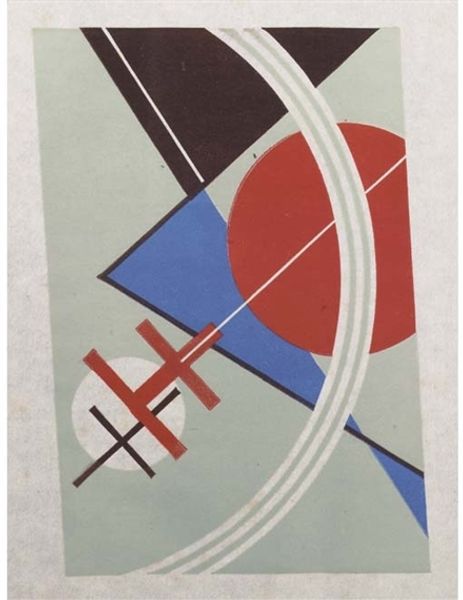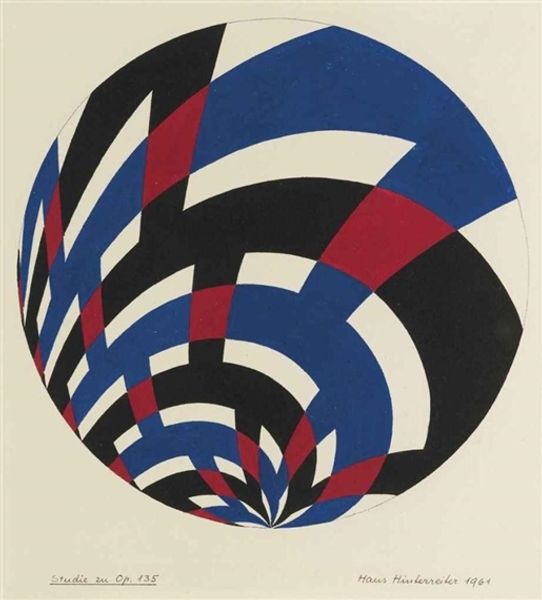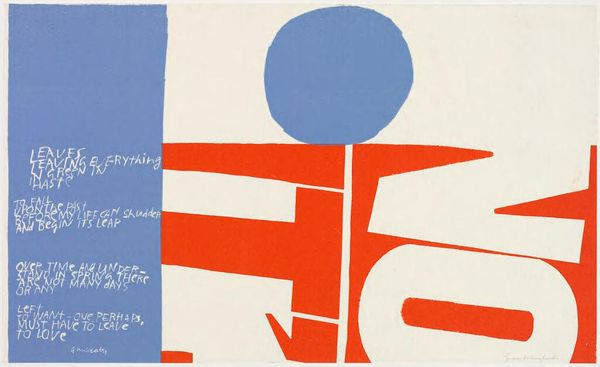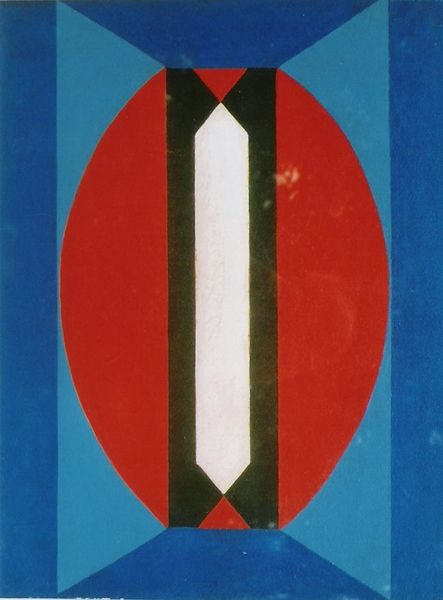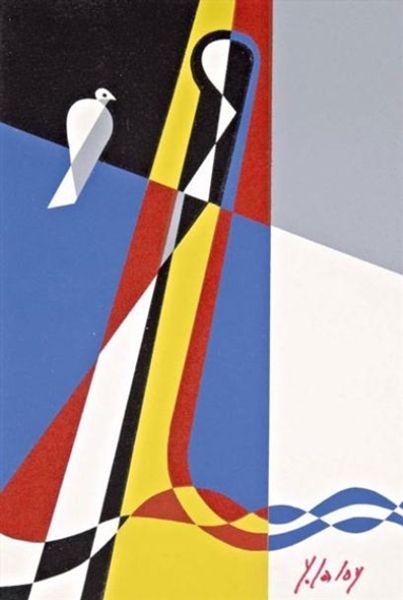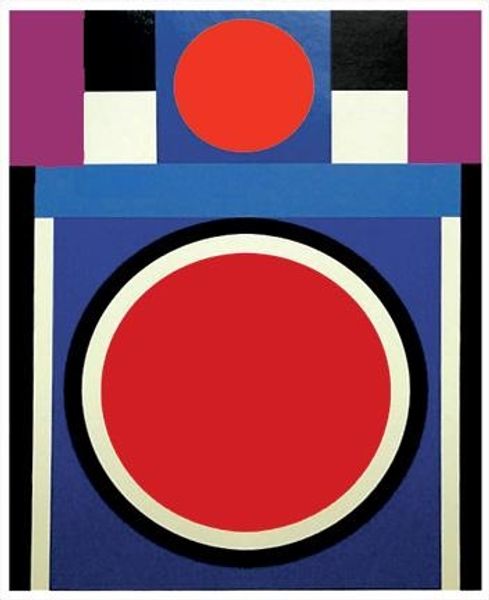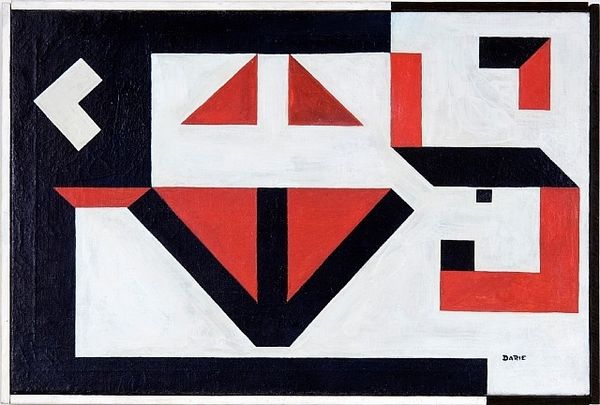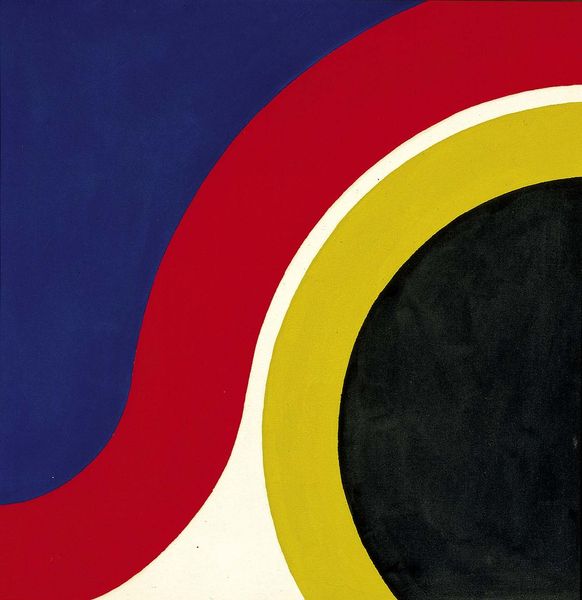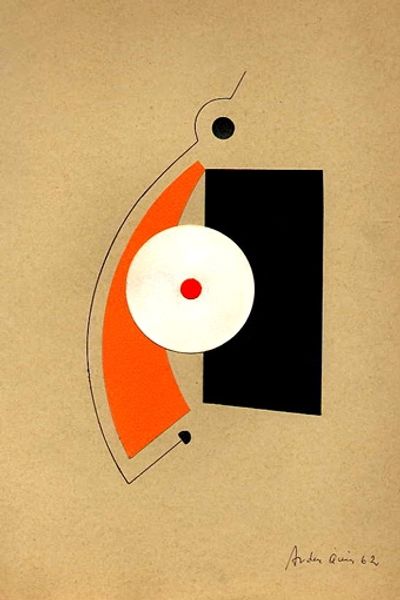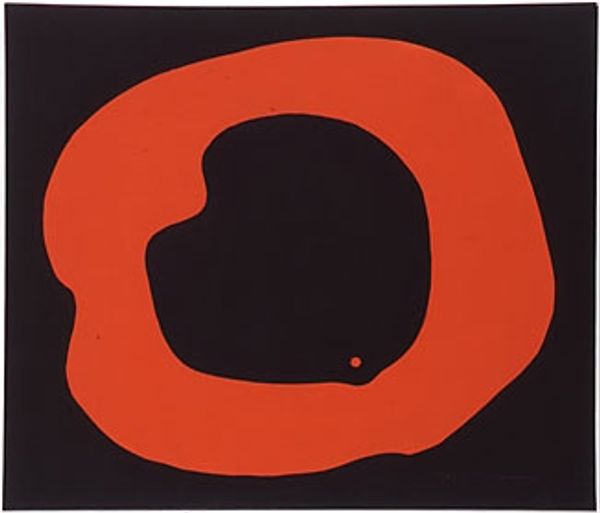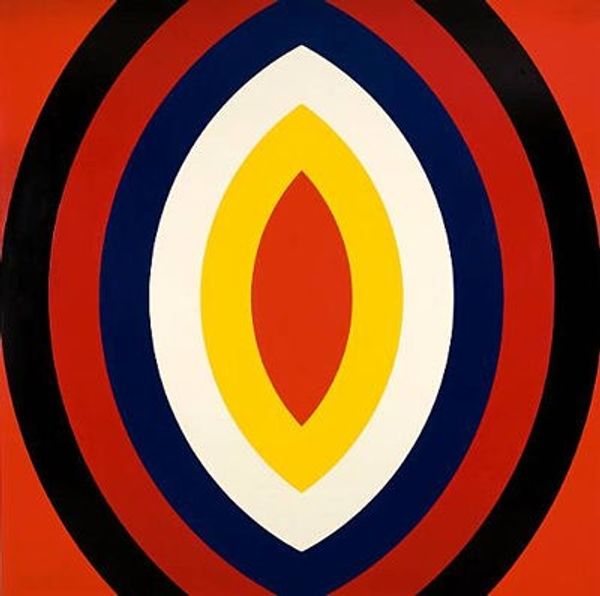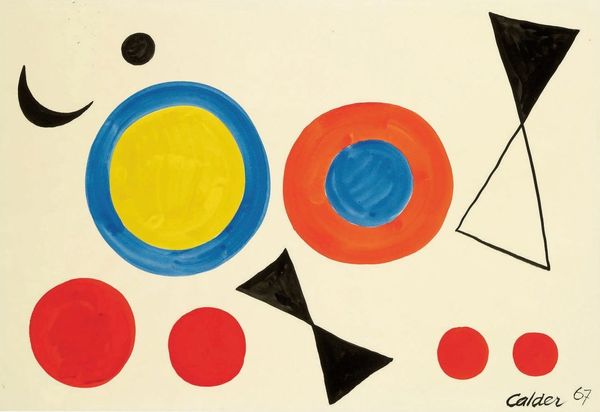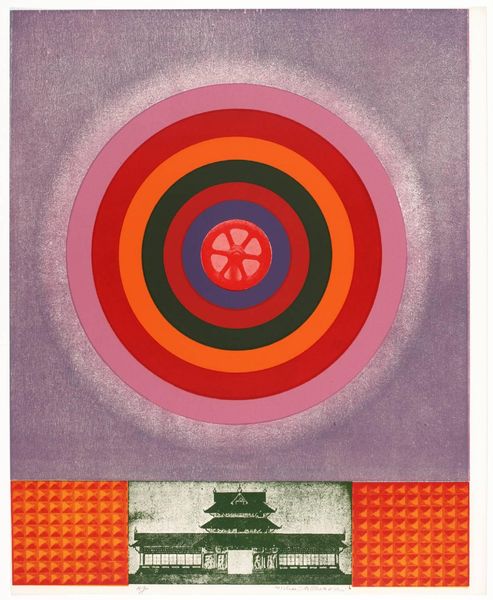
painting
#
abstract-expressionism
#
painting
#
pop art
#
colour-field-painting
#
form
#
geometric
#
abstraction
#
line
#
modernism
Copyright: Ramirez Villamizar,Fair Use
Curator: We're now standing before an abstract painting by Ramirez Villamizar, created in 1958, simply titled "Untitled." It's a striking composition of geometric shapes. Editor: It’s surprisingly austere. The severe geometry feels quite cool, almost mechanical, despite the warmth suggested by the reds. What was Villamizar exploring with these forms and materials? Curator: Well, let’s consider the cultural and historical context. This was created in a period heavily influenced by modernism. The abstraction certainly departs from earlier traditional and figurative depictions, reflecting a post-war preoccupation with form and structure rather than explicit representation. It is an investigation of pure forms, exploring relationships of space and colour in the wake of industrialisation. Editor: Indeed. I am especially drawn to the flatness of the painted forms - the unblended paint emphasises that sense of geometric reduction. I wonder about the choices of colour and their relationships; why blue next to a black rectangle against such muted, muddy hues? Curator: The bold colors do add an element of intrigue. Color field painting sought to liberate colour from its supporting role, presenting it as the primary conveyor of meaning. It is possible that, beyond formalism, the painting gestures toward certain political contexts of the time through colour as a signifier. But his abstraction is also quite concerned with perception and epistemology - thinking about how we think about form. Editor: Interesting to consider the intersections of visual experience and theoretical frameworks of perception here. The geometric abstraction itself can almost be read as diagrams. How did Villamizar view his role in society through his creative choices and what means and what methods he used in practice to pursue these new forms? Curator: He saw his work as a tool to advance new ways of seeing, in opposition to established powers that promoted very specific methods for figurative representations, linked to colonialism. Editor: The painting definitely presents itself as something clean, precise and expertly-fashioned; which suggests that the creative process required specific knowledge and skilled making to materialise. Thinking about that, what would you hope visitors take away from Villamizar's painting after examining it more closely today? Curator: I'd hope they think about art’s capability to reveal as well as conceal power dynamics, questioning accepted norms through the guise of simple forms. Editor: For me, considering the art making that Villamizar explores reveals not only aesthetic appeal, but that it has a great amount of material skill invested, so one understands its intrinsic artistic value even more.
Comments
No comments
Be the first to comment and join the conversation on the ultimate creative platform.
